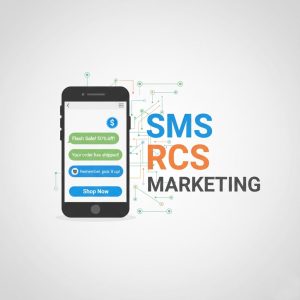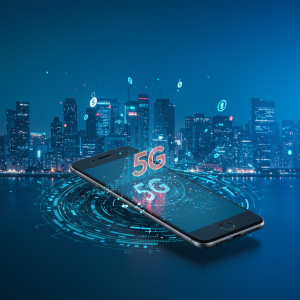SMS Marketing for eCommerce: Boost Conversions with Mobile Messaging

Why SMS Marketing is Essential for eCommerce Success in 2025
In today’s competitive eCommerce landscape, connecting with customers has never been more challenging. With inbox saturation and social media algorithm changes, SMS marketing has emerged as the most direct and effective channel for engaging your audience. With a staggering 98% open rate—typically within just 3 minutes of receipt—SMS delivers unparalleled visibility compared to email’s average 20% open rate.
For online dealers who want to cut through digital noise, SMS marketing provides a powerful solution that adds immediate, privatization and remarkable returns. This broad guide examines how the implementation of mobile messages can change performance 2025 and beyond e -commerce activities.
The Current State of SMS Marketing in eCommerce
SMS marketing for eCommerce has evolved significantly from simple promotional blasts to sophisticated, targeted campaigns that drive meaningful customer engagement. Recent statistics paint a compelling picture:
- 90% of SMS messages are read within 3 minutes of receipt
- SMS marketing generates conversion rates up to 45% higher than email
- 77% of consumers have a positive perception of companies that use text messaging
- SMS campaigns produce an average ROI of 500%
The effectiveness of SMS stems from its directness. Unlike emails that can languish unread or social posts that might never appear in feeds, text messages demand immediate attention. According to Mobile Marketing Watch, text messages have a 209% higher response rate than phone calls, emails, or Facebook messages.
7 Strategic Benefits of SMS Marketing for Online Retailers
1. Unmatched Open and Response Rates
The most compelling reason to implement SMS marketing is its extraordinary engagement metrics. With open rates approaching 98% and response rates averaging 45%, no other digital marketing channel comes close to matching SMS’s ability to capture customer attention.
These engagement rates translate directly to conversion opportunities. When implementing strategic SMS campaigns, eCommerce businesses routinely see conversion improvements of 25-35% compared to other channels.
2. Direct and Immediate Customer Communication
Text messaging provides instant delivery of time-sensitive information. Whether you’re announcing flash sales, limited inventory alerts, or shipping updates, SMS ensures your message reaches customers precisely when needed.
Consider these scenarios where immediacy creates value:
- Flash sale announcements with countdown timers
- Back-in-stock notifications for popular items
- Abandoned cart reminders with time-limited incentives
- Shipping and delivery status updates
3. Personalization at Scale
Modern SMS marketing platforms enable sophisticated segmentation and personalization. Beyond simply addressing customers by name, you can tailor messages based on:
- Purchase history and browsing behavior
- Geographic location and time zone
- Customer lifetime value and loyalty status
- Product preferences and wish lists
This level of personalization creates relevance that significantly boosts engagement. According to research from Twilio, personalized SMS messages generate 4.5x more conversions than generic broadcasts.
4. Seamless Integration with Other Marketing Channels
SMS marketing doesn’t exist in isolation—it performs best as part of an omnichannel strategy. When integrated with your email, social media, and on-site messaging, SMS creates powerful touchpoint synergies:
- Follow up abandoned cart emails with SMS reminders
- Send text confirmations after newsletter sign-ups
- Reinforce social media promotions with exclusive SMS offers
- Use post-purchase texts to request reviews or social shares
This cross-channel approach creates multiple opportunities to engage customers through their preferred communication methods.
5. Enhanced Customer Service and Support
Beyond promotional content, SMS provides an efficient channel for customer service interactions. With 76% of consumers expecting immediate responses to inquiries, text messaging meets this demand with:
- Real-time order status updates
- Quick resolution of common questions
- Two-way communication capabilities
- Automated responses to frequently asked questions
Many leading eCommerce platforms now offer integrated SMS helpdesks that connect seamlessly with inventory and order management systems, creating a frictionless customer service experience.
6. Improved Data Collection and Analytics
SMS marketing generates valuable customer intelligence that informs broader marketing initiatives. Each campaign produces actionable metrics:
- Open and click-through rates
- Conversion attribution data
- Optimal sending times
- Customer response patterns
This continuous feedback loop allows for ongoing optimization of not just SMS campaigns, but marketing efforts across all channels.
7. Cost-Effectiveness and Measurable ROI
Compared to paid advertising and other acquisition channels, SMS marketing delivers exceptional return on investment. With average costs between $0.01-0.05 per message and conversion rates often exceeding 30%, the economics are compelling.
Most eCommerce businesses implementing strategic SMS programs report ROI between 500-700%, making it one of the most cost-effective marketing channels available.
Implementing an Effective SMS Marketing Strategy for Your eCommerce Business
Building Your SMS Subscriber List
The foundation of successful SMS marketing is a quality subscriber list. Unlike email, where purchased lists are sometimes used (though not recommended), SMS requires explicit opt-ins under regulations like TCPA and GDPR.
Effective methods for building your SMS list include:
- Website opt-in opportunities: Place SMS sign-up forms at strategic points in the customer journey, including checkout pages, pop-ups for first-time visitors, and account creation flows.
- Incentivized subscriptions: Offer immediate value for SMS opt-ins, such as first-purchase discounts, free shipping, or exclusive access to new products.
- Cross-channel promotion: Leverage your existing email list, social media following, and in-package materials to promote SMS subscription benefits.
- Keyword campaigns: Create memorable short codes and keywords that customers can text to subscribe (e.g., “Text SAVE to 55555 for 15% off”).
Remember that quality trumps quantity—a smaller list of engaged subscribers outperforms a larger list of uninterested contacts.
Crafting Compelling SMS Content
SMS marketing success depends heavily on creating concise, action-oriented messages that deliver value. With a 160-character limit for standard SMS, every word must serve a purpose.
Best practices for eCommerce SMS content include:
- Clear value proposition: State the benefit immediately (e.g., “25% OFF sitewide today only!”)
- Sense of urgency: Use time or quantity limitations to prompt action (“Last 5 hours!” or “While supplies last”)
- Direct call-to-action: Include explicit instructions on the next step (“Shop now” or “Claim your discount”)
- Personalization elements: Reference customer name, past purchases, or browsing history when relevant
- Concise links: Use shortened URLs that track clicks and conversions
Most importantly, every message should deliver genuine value rather than merely promoting products. Value can take many forms—exclusive offers, early access, useful information, or entertainment.
Timing and Frequency Optimization
Timing is crucial for SMS effectiveness. Unlike email, which people check periodically, texts create immediate notifications. This power comes with responsibility—sending at inappropriate times can alienate subscribers.
Research from Mobile Marketing Association suggests these timing best practices:
- Send promotional messages between 10am-8pm local time
- Respect time zones when scheduling campaigns
- Avoid early mornings, late evenings, and meal times
- Limit frequency to 4-8 messages monthly for most eCommerce businesses
- Increase frequency only during peak shopping seasons with subscriber notification
Many advanced SMS platforms now offer AI-powered sending time optimization that learns individual subscriber preferences.
Segmentation and Personalization Techniques
Basic SMS blasts to your entire list rarely maximize ROI. Segmentation enables targeted messages that increase relevance and drive higher conversions.
Effective segmentation strategies include:
- Purchase history segments: Target customers based on specific product categories or price points they’ve previously purchased
- Behavioral segments: Create groups based on website browsing history, cart abandonment, or engagement with previous messages
- Customer lifecycle stage: Develop different messaging for new customers, repeat buyers, and loyal advocates
- Geographic segments: Send location-specific promotions, especially for businesses with physical locations
- Engagement level segments: Adjust frequency and content based on how responsive subscribers have been to previous messages
With advanced customer segmentation strategies, some eCommerce businesses have increased SMS conversion rates by over 40%.
Compliance and Best Practices
SMS marketing carries specific legal requirements that vary by country. In the United States, the Telephone Consumer Protection Act (TCPA) governs SMS marketing with strict penalties for violations.
Essential compliance elements include:
- Explicit consent: Obtain clear permission before sending marketing messages
- Identification: Identify your business in each message
- Opt-out instructions: Include simple unsubscribe directions in every message
- Frequency disclosure: Inform subscribers about expected message volume
- Privacy policy access: Provide easy access to your privacy policy
Beyond legal requirements, following best practices builds trust:
- Honor opt-outs immediately
- Never send messages outside of reasonable hours
- Provide immediate value in welcome messages
- Test all links before sending
Measuring Success: Key SMS Marketing Metrics for eCommerce
To optimize your SMS marketing performance, track these essential metrics:
1. Delivery Rate
Monitor what percentage of your messages are successfully delivered to subscriber devices. Industry benchmarks suggest this should exceed 97%.
2. Open Rate
While technical limitations make true open tracking difficult for SMS, approximations can be made through link clicks and response rates.
3. Click-Through Rate (CTR)
Track the percentage of recipients who click included links. Average CTRs for eCommerce SMS campaigns range from 15-30%.
4. Conversion Rate
Measure the percentage of recipients who complete desired actions after receiving your message, whether purchasing, signing up, or other objectives.
5. ROI and Revenue Attribution
Calculate the direct revenue generated from each campaign divided by its cost to determine ROI.
6. Unsubscribe Rate
Monitor opt-out rates closely—anything above 3% per campaign indicates potential messaging problems.
7. Growth Rate
Track how quickly your subscriber list grows relative to your overall customer base.
The Future of SMS Marketing for eCommerce
As we look toward the future, several emerging trends will shape SMS marketing for online retailers:
Rich Communication Services (RCS)
The successor to standard SMS, RCS enables rich media, interactive elements, and improved analytics within the native messaging experience. Major carriers are increasingly supporting this technology, which combines the directness of SMS with the richness of app-based messaging.
Conversational Commerce
AI-powered chatbots integrated with SMS systems are enabling true two-way conversations that can handle order placement, product recommendations, and customer service without human intervention.
Enhanced Personalization Through AI
Machine learning algorithms are revolutionizing SMS personalization by predicting optimal sending times, product recommendations, and offer structures for individual subscribers.
Augmented Reality Integration
Innovative retailers are beginning to send SMS messages with links to AR experiences that allow customers to visualize products in their own space before purchasing.
Conclusion: SMS Marketing as a Competitive Advantage
In a rapidly crowded e -commerce scenario, SMS marketing gives a direct way to customers’ attention that E -post and social media can no longer guarantee. Its unique open prices, immediate and privatization functions make it an important component of high -performance digital marketing strategy.
By implementing the strategies outlined in this guide and partnering with SMS specialists, your eCommerce business can leverage mobile messaging to drive significant improvements in customer acquisition, conversion rates, and lifetime value.
The brands that master SMS marketing now will enjoy a substantial competitive advantage as consumer attention becomes increasingly fragmented across digital channels. For eCommerce businesses serious about growth in 2025 and beyond, developing a sophisticated SMS strategy isn’t optional—it’s essential.







